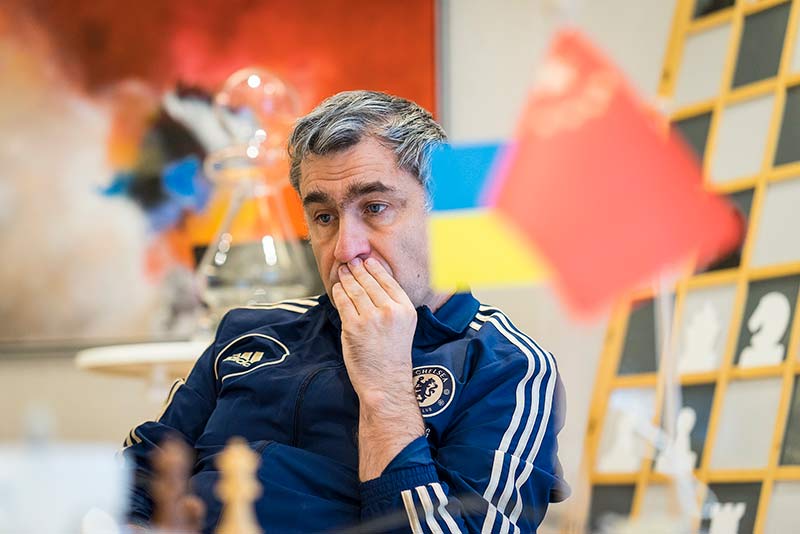Hoogeveen's 21st edition
The Dutch town of Hoogeveen is hosting the 21st edition of the Hoogeveen Chess Tournament from October 21st to 28th, 2017. The event comprises two six-game grandmaster matches: The first between the current world rapid champion, Vassily Ivanchuk and the Chinese prodigy — and current Chinese Champion — Wei Yi; the second features Adhiban Baskaran and Jorden van Foreest, two promising youngsters from their respective countries — India and the Netherlands. Games use a classical time control of 90 minutes for the first 40 moves and then another 30 minutes till the end of the game, with a 30-second increment from move one. There is also hosting a strong open tournament and a couple of amateur tournaments.
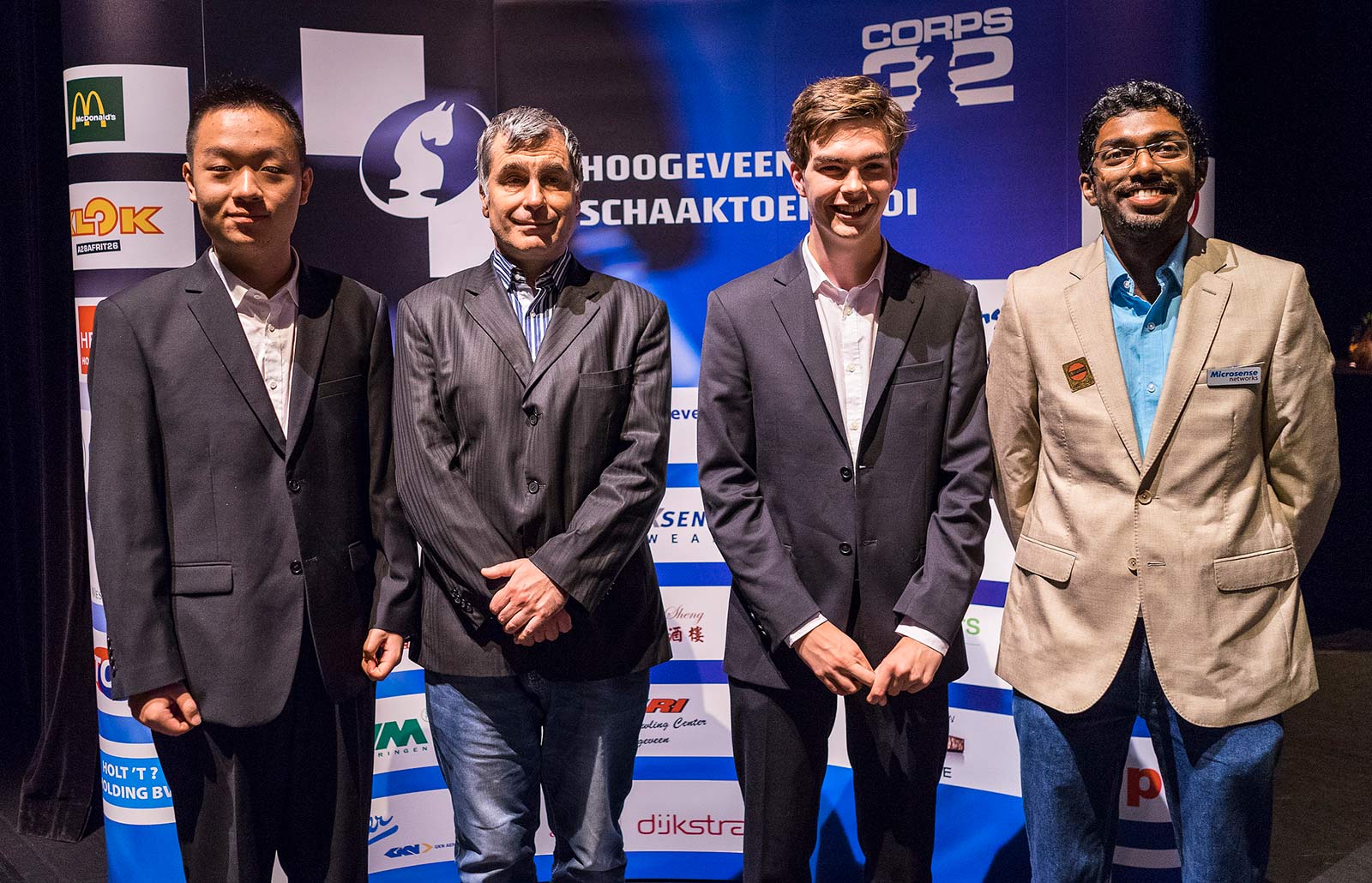
Wei Yi, Vassily Ivanchuk, Jorden van Foreest, and Adhiban Baskaran at the opening ceremony | Photo: Lennart Ootes, Hoogeveen Chess
The Matches: Day 1
The "battle of the generations" between the 48-year-old Vassily Ivanchuk and his 18-year-old opponent, Wei Yi, seemed dull at the outset, but Ivanchuk thought otherwise. The reigning world rapid champion was particularly impressed by the Chinese teenager's opening — a Nimzo-Indian in which Wei went for a quick central break with 10…Nc6 and 12…e5.
"I think 10...Nc6 was an interesting move aiming for ...e6-e5. After that Black was OK", said Ivanchuk after the game.
Ivanchuk insisted on keeping the centre closed with 12.d5, following in the footsteps of Alexander Grischuk against Hikaru Nakamura in June at the Paris Grand Chess Tour Blitz, but after 12..Nb3 Ivanchuk went for 13.e4 (instead of Grischuk's 13.e3).
Wei was able to induce mass exchanges on the f3 square and enter a double rook endgame with equal pawns, leading to another finesse by the Chinese: 29…f5 after which there was no doubt that the game was going to end in one of two results.
Of course, after Ivanchuk's 30.exf5, his tripled pawns are not going to win him the game.
Rustam Kasimdzhanov, the FIDE World Champion in 2004, has been extremely successful with the Nimzo-Indian with 4.Qc2 with White and with Black. In over 4 hours of video, Rustam Kasimdzhanov explains all the important ideas, strategies and tricks helped by sample games in which the white side is represented, e.g., by Kasparov, Anand, Kramnik and Ivanchuk as well as the author himself.
Adhiban’s bang and whimper
The other game of the exhibition matches on the first day was a far more interesting affair. Keeping up with the spirit of Diwali (the Indian festival of lights which is being celebrated in his home country right now), Adhiban lit up the board with fireworks from the word 'go' in his game against Jorden van Foreest.
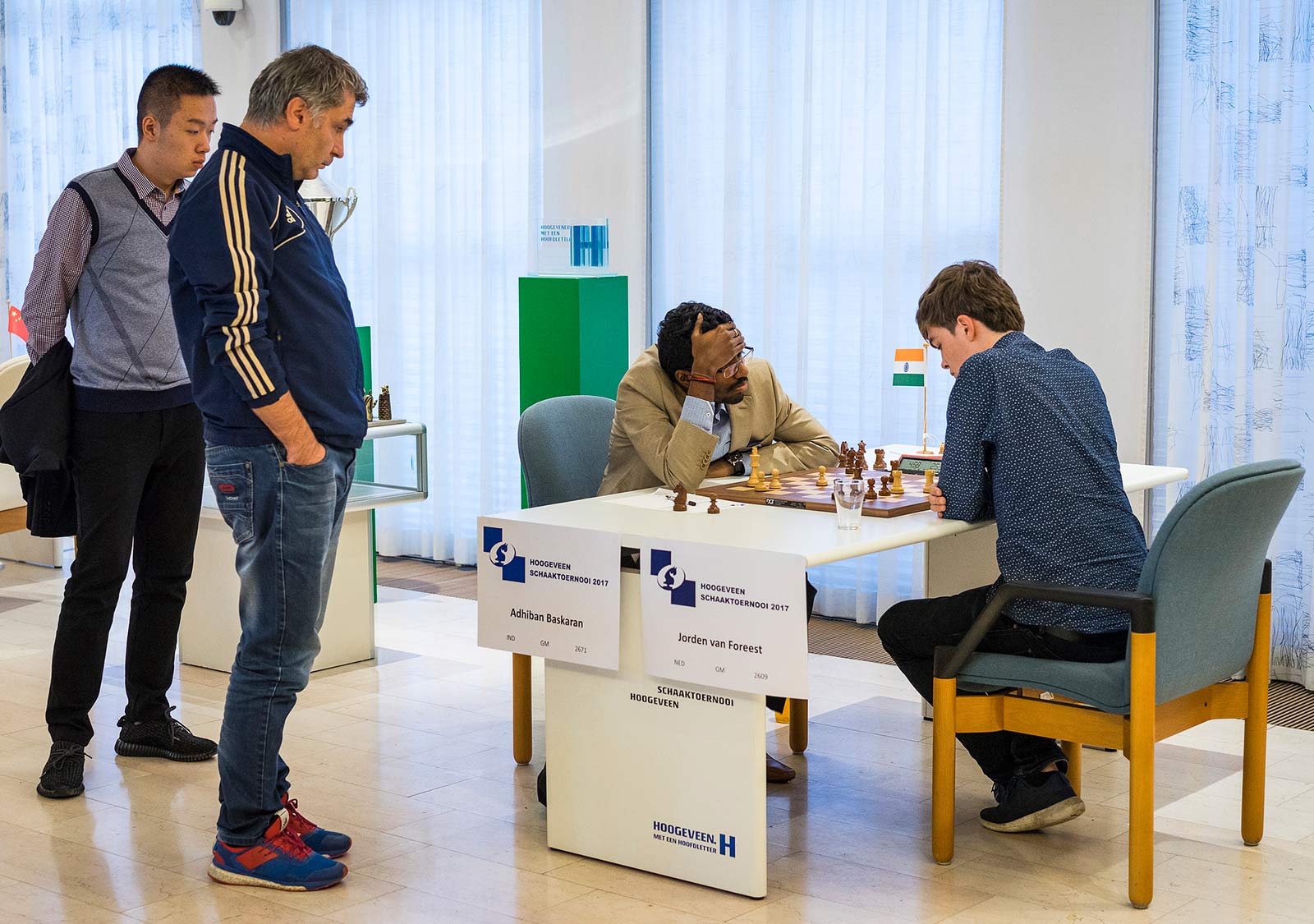
Ivanchuk and Wei Yi were also wanted to know what was going on | Photo: Lennart Ootes
Perhaps van Foreest, having traded queens very early in a Queen’s Gambit Accepted, had little reason to think the game would go haywire. Things had gone smooth thus far, the position was placid, life was happy. But after van Foreest’s 10th move, Adhiban went into a 30-minute-long think and lashed out with a knight sacrifice that was good enough to jolt even spectators and theoreticians off their chairs, let alone his opponent.
And that knight sac was an over the board find! After the tactical storm calmed, Adhiban had recovered his piece and won a pawn as interest on his investment. But just when it seemed he was cruising towards victory, van Foreest struck back with an artful exchange sac and began building a fortress. A few moves later, another tactical skirmish won van Foreest his exchange back and now a draw was inevitable.
28...Rxb5 was the sac that saved the day.
"I should not have allowed it", said Adhiban with a sigh, after the game. "I had seen it, but not in combination with Black's 27...e5, which makes it better. So probably I should have played 27.Rb4 instead of 27.Rc7."
Van Foreest too sighed, but that was a sigh of relief. "This was a narrow escape…it feels like a victory," he said.
In this DVD Sam Collins presents a repertoire for Black based on the Queen’s Gambit Accepted, 1.d4 d5 2.c4 dxc4. Rather than get involved in the heavy theory of the Classical Main Line, the lynchpin of the repertoire is the active development of the queen’s bishop. The resulting positions have close similarities to the Nimzo Indian and Slav Defences, and Collins explains the way for Black to approach the middlegame with confidence based on a blockade and light square strategy. The resulting repertoire is solid, reliable, and suitable as either a main weapon or an occasional surprise choice. Video running time: 3 hours 30 min
Day 2: A mad, mad game!
It’s a common belief that younger players are better tacticians. Older GMs, more often than not, tend to stick to this mantra and prefer a positional game against youngsters. But in his second game of the match, Vassily Ivanchuk chose to take the bull by the horns and went for a Sicilian Scheveningen against Wei Yi and when an opportunity arose, gobbled the poisoned pawn on b2.
And guess how Wei responded! (Move the pieces on the live diagram!)

Wei Yi get ready to rumble in round two | Photo: Lennart Ootes
He could not help but oblige his opponent’s provocation and responded with the wild-looking 20.Bxb5. But, as it happens in a lot of sharp tactical situations, a repetition of moves ensued after the initial fireworks fizzed out.
The aim of this DVD is to demonstrate the typical tactical themes of the Sicilian Najdorf and to improve your understanding of them, as well as to practice them with the interactive examples.
Adhiban's first strike
Oddities abound the second game of the match between Adhiban and van Foreest. After his fumble in the first round which let his opponent slip out with a draw, Adhiban made no mistake in converting his advantage in this one.
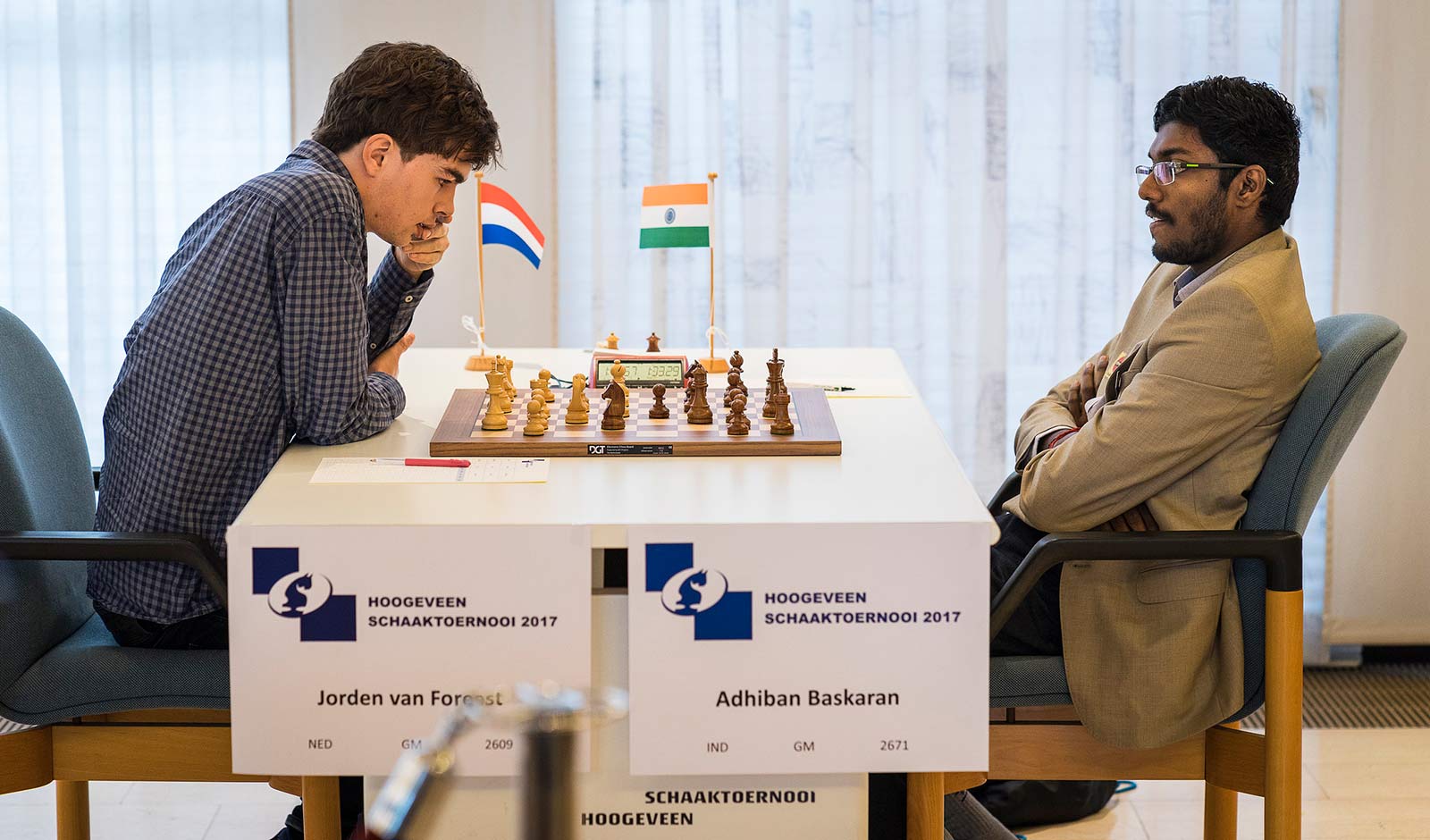
Early in Round 2 | Photo: Lennart Ootes
From the black side of an Italian opening, the Indian number five was able to win a pawn early in the game after some strange moves by both players. Both players showed a thing for sidelining their knights as van Foreest, in response to Adhiban’s 15…Na5 kept up the aesthetic of the position with 16.Nh4. What's with those knights?
Curiously enough, the Dutchman rejected the decent way of safeguarding the c4 pawn by exchanging everything on h6 and playing Nd2; instead, he chose to shed a pawn and even queens were traded soon after!
With the better position and a healthy pawn, Adhiban swung his knight around, traded pieces and did everything to ensure smooth victory. By the 72nd move, van Foreest was on his knees.
In the first ever English "Master & Amateur" ChessBase DVD, International Master Lorin D'Costa and chess-software expert Nick Murphy take you through the main ideas of the Giuoco Piano in an easy to follow, conversational style.
Day 3: A blunderful day!
Third time is a charm they say. After testing Wei Yi both technically and tactically in the first two games, Vassily Ivanchuk finally succeeded in scoring a victory in the third game of the Hoogeveen Matches. However, this wasn’t so much because of Ivanchuk’s own ingenuity as it was due to Wei’s overambitious play. Nevertheless, "Chucky" had to find some accurate moves to seal the deal.
In a perfectly playable middle game that cropped out of the Queen’s Gambit Ragozin, Wei lured the white king into the centre by sacrificing an entire rook on move 18!
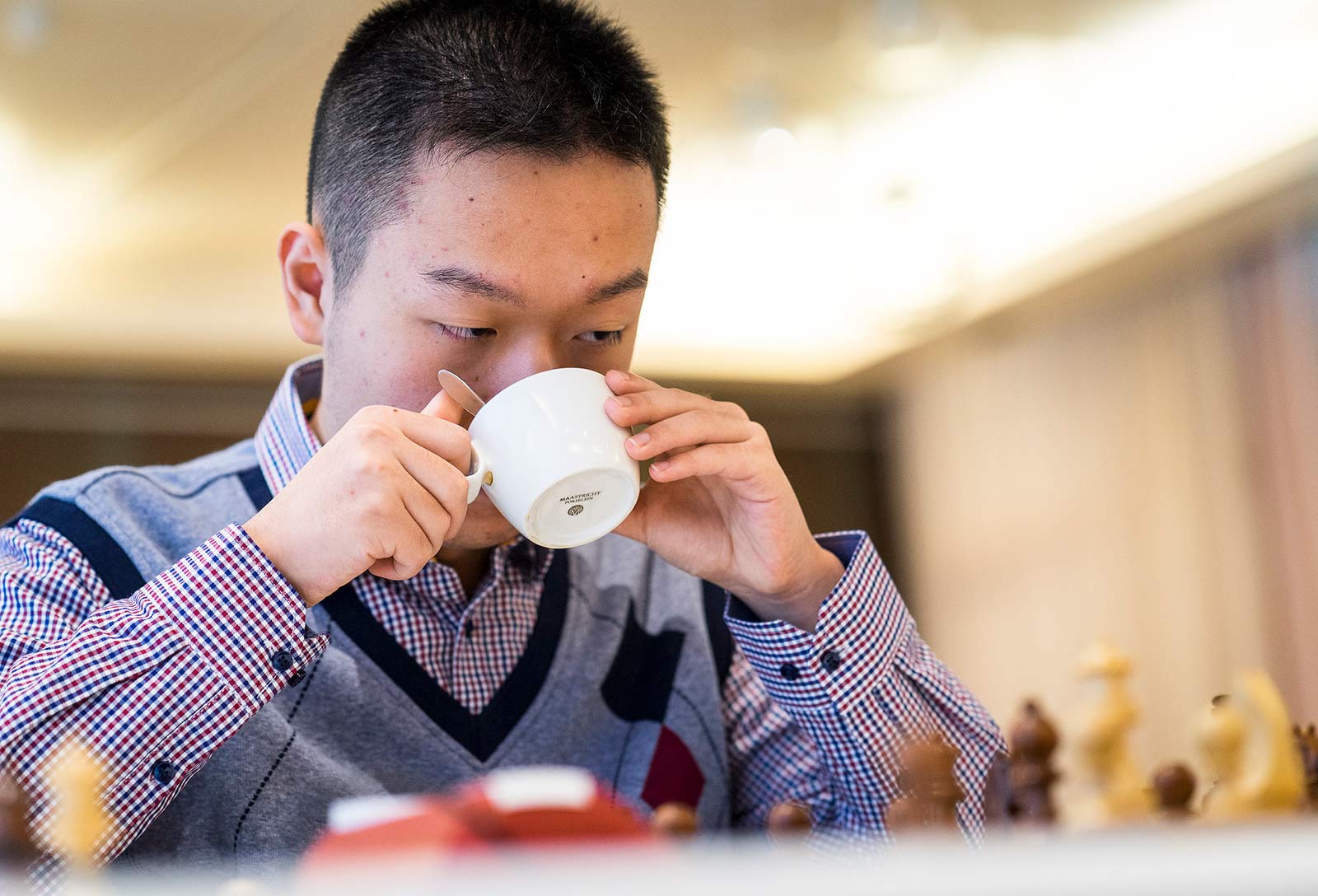
Perhaps the tea gave Yi an adrenaline rush! | Photo: Lennart Ootes
Of course, the cold-blooded engines dubbed the sac dubious within microseconds. But for death-fearing humans, having the king dragged to the centre in a middlegame is reason enough to sweat buckets.
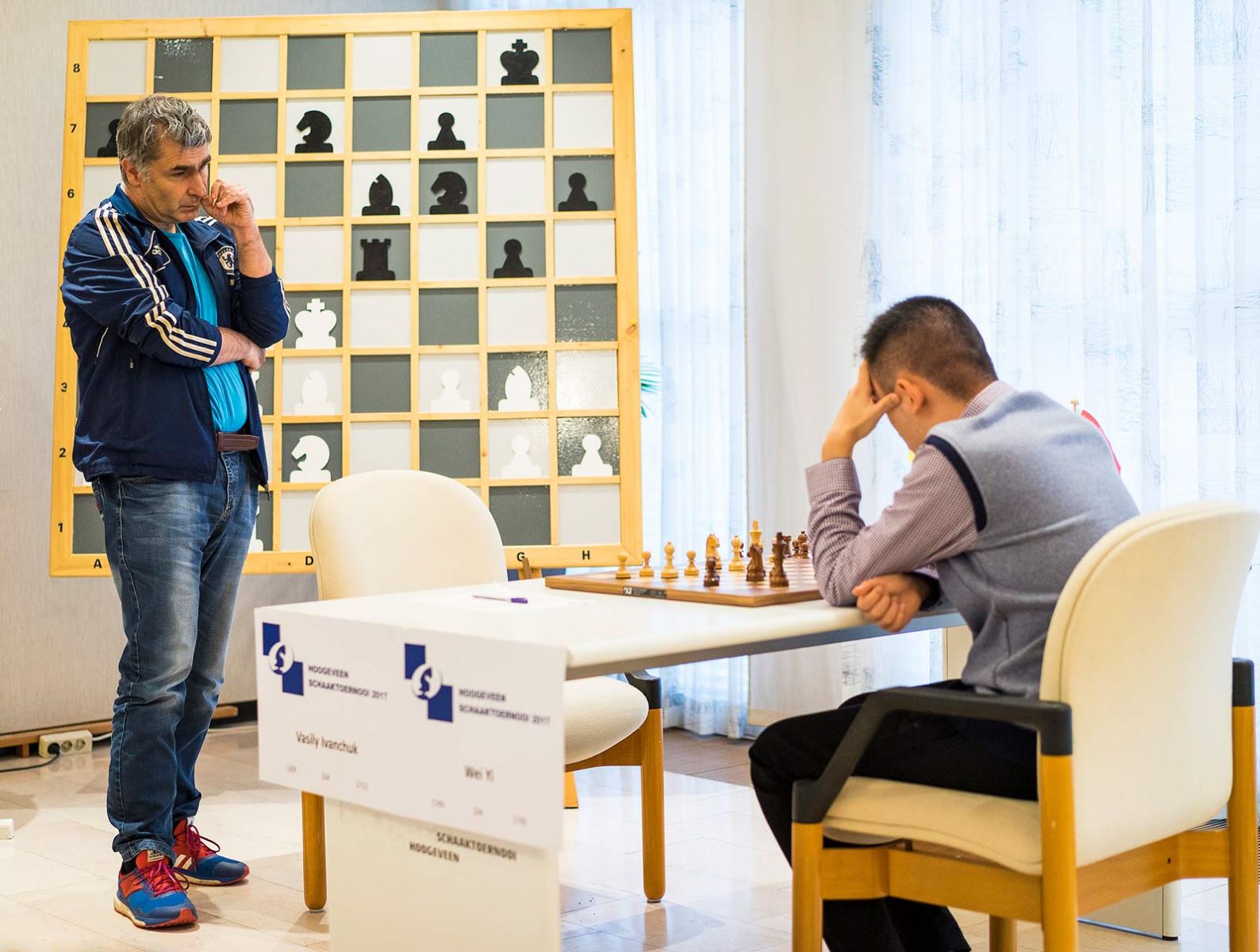
Ivanchuk did look a bit puzzled, if not nervous | Photo: Lennart Ootes
Chucky had no option, anyway, than to take the rook. Besides he isn’t the kind of player who would back down in the face of complications; so, he plunged right in, gobbled all the offered material as if to ask, “now, what are you gonna do about it?”.
The game ended in a tragic-comic position where the white monarch was surrounded by enemy troops but not one of them could dare to check his majesty! Play through this one so as not to miss the final position!
The Ragozin is being played by every top grandmaster in the world - it is time you also add it to your repertoire to get interesting and dynamic positions against 1. d4!
GM Alejandro Ramirez analyses every single move that White can play once the Ragozin is reached, but due to several transpositional possibilities he always emphasises strategic goals to keep in mind.
The game between van Foreest and Adhiban also featured a curious blunder. For the third time in a row, van Foreest found himself a pawn down against Adhiban. But this time, he had decent positional compensation.

Despite ending up in an inferior position in the last game, van Foreest did not fear the QGA | Photo: Lennart Ootes
In response to Adhiban’s 1.d4, van Foreest put his faith in the Queen's Gambit Accepted yet again. The game followed the same moves as the first game between the two players until Adhiban deviated on the seventh move and avoided a queen exchange.
Complications soon arose — Adhiban sacked his knight on move 17 and after the five move long sequence that followed, he came out with an extra pawn, just as he had in the first game.
The big difference, however, was that his opponent had much better compensation this time. With threats looming on the back rank, the Indian made an inaccuracy first, and a blunder later which let van Foreest not only win his pawn back but also grab an exchange.

Adhiban was visibly disappointed with the result | Photo: Lennart Ootes
As moves passed, his rook and bishop proved their superiority over Adhiban’s bishop and knight. By the 49th move, the bishops were off the board and Adhiban’s knight, which was caught in an elementary double attack, was about to be hacked off. There was no reason to play any further.
At the half
Halfway "down the road", Ivanchuk has taken the lead against Wei Yi with a score of 2 : 1 while Jorden van Foreest has been able to level scores at 1½-1½ against Adhiban Baskaran after his win in Game 3. With three more games to go, a lot of exciting chess awaits!
Game 4
Update 19:30 CEST: Jorden van Foreest wins Game 4 to take a one point lead. Ivanchuk remains a point up, with two games to play.
Links
